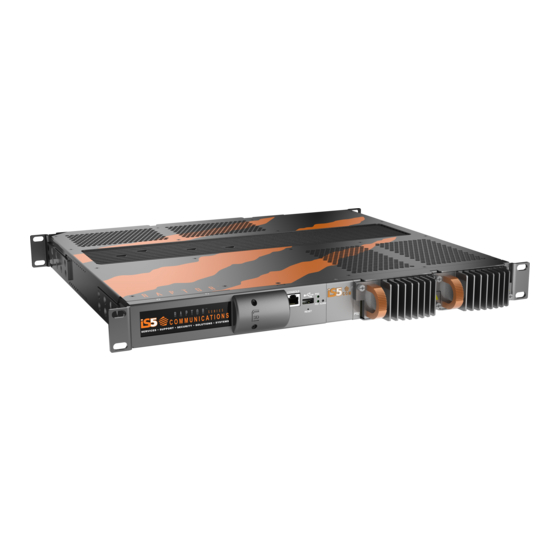
Summarization of Contents
Introduction
Purpose and Scope
Defines the scope and objectives covered by this quick start guide.
Console Port: Logging into the RAPTOR
Console Port Connection and PuTTY Setup
Guides users on connecting via the console port and configuring the PuTTY terminal emulator.
COM Port Identification via Device Manager
Details steps to identify the correct COM port using the Windows Device Manager utility.
PuTTY Serial Configuration Settings
Specifies the necessary serial parameters for PuTTY, including baud rate and flow control.
SSH: Logging into the RAPTOR
SSH Connection Prerequisites and Setup
Outlines the requirements and initial steps for establishing an SSH connection to the RAPTOR.
PuTTY SSH Client Configuration
Instructions for configuring the PuTTY client for SSH access, including host and port settings.
Command Line: Switch Name
Setting the Device Switch Name
Procedure to configure the RAPTOR's network switch name using the command-line interface.
Command Line: Switch Prompt
Customizing the Command Line Prompt Text
Explains how to modify the appearance of the command line prompt for user convenience.
Command Line: IP Address Configuration
Configuring VLAN Interface IP Settings
Steps to assign an IP address, subnet mask, and other parameters to a VLAN interface.
Configuring the Default IP Route
Guide on setting up the default gateway route using CLI commands.
Command Line: Admin Password
Changing the Administrator Password
How to set or update the administrator password using the command line.
Command Line: Save and Restore Configuration
Saving Configuration to Flash Memory
Process to save the active configuration to the device's flash storage.
Saving Configuration to USB Drive
Method for backing up the configuration to an external USB storage device.
Restoring Configuration from USB
Instructions to load a saved configuration from a USB drive.
Command Line: Upgrading the RAPTOR
Valid Firmware Upgrade Paths
Information on supported firmware versions and upgrade procedures.
Performing Firmware Upgrade via CLI
Detailed steps to upgrade the RAPTOR firmware using command-line interface.
Web Interface: Logging into the RAPTOR
Ethernet Connectivity for Web Access
Setting up the physical and IP connection for web interface access.
Accessing the Web Login Portal
Launching a web browser and navigating to the RAPTOR's IP address.
Web UI User Authentication
Logging into the web interface using valid user credentials.
Web Interface: System Settings
Navigating to System Settings Page
Guide to locate and access the system configuration screen.
Configuring General System Parameters
Modifying settings like Switch Name, Prompt Name, and System Contact.
Web Interface: IP Address and Default Routes
Configuring VLAN Interface IP Settings
Setting IP address, subnet mask, and other parameters for VLAN interfaces.
Configuring IPv4 Interface Details
Manages IPv4 address, subnet mask, and address type settings for network interfaces.
Defining IP Routing Entries
Adds network routes and the default gateway to the device's routing table.
Web Interface: User Password
Accessing the User Management Interface
Navigates to the user manager to view and manage user accounts and their privileges.
Modifying User Credentials
Provides steps to change user passwords and update them via the web interface.
Web Interface: Save and Restore Configurations
Saving Configuration to Flash Memory via WebUI
Saves the current running configuration to the device's non-volatile flash memory.
Saving Configuration to USB via WebUI
Backs up the device configuration to an external USB storage device.
Restoring Configuration from USB via WebUI
Loads a previously saved configuration from a USB drive into the device.
Rebooting the Device After Restore
Details the reboot process required for configuration changes to take effect.
Web Interface: Upgrade the RAPTOR
Valid Firmware Upgrade Paths
Lists supported firmware versions and provides guidance on upgrade compatibility.
Initiating Firmware Upgrade via USB
Guides on starting a firmware upgrade process using a USB drive and the web interface.
Monitoring System Upgrade Progress
Explains how to track the status and progress of the firmware upgrade.


Need help?
Do you have a question about the iMX350 and is the answer not in the manual?
Questions and answers